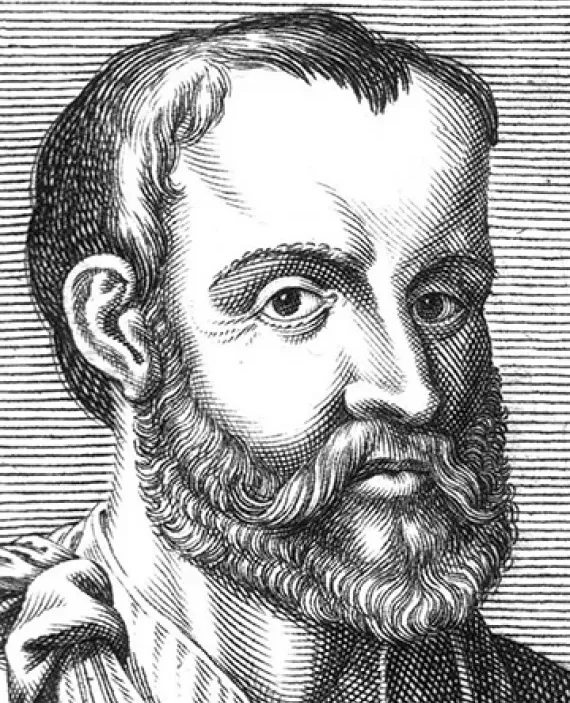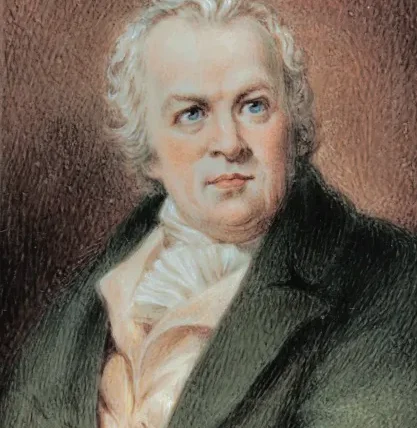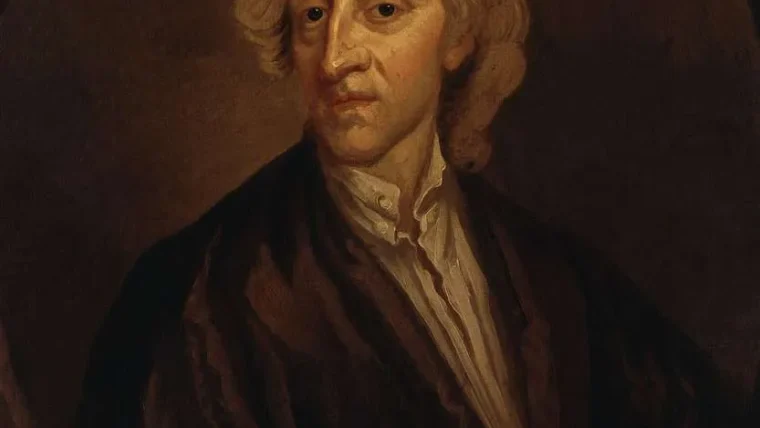Galen’s Early Life and Education
Galen, one of the most influential figures in the history of medicine, was born in Pergamon, Asia Minor (present-day Turkey), in 129 AD. Little is known about his early life, but it is believed that he came from a privileged background, as his father was a wealthy architect. Galen’s interest in medicine began to emerge at a young age, as he observed his father’s work on constructing health facilities, such as the Asclepeion, a healing temple dedicated to the Greek god of medicine, Asclepius.
In his quest for knowledge, Galen traveled extensively, seeking education from some of the renowned centers of learning in the ancient world. At the age of 16, he embarked on a journey to Alexandria, Egypt, where he studied under prestigious tutors at the famed Library of Alexandria.
This intellectual hub provided Galen with access to a vast collection of medical texts and allowed him to study alongside other aspiring scholars. During his time in Alexandria, Galen immersed himself in various subjects, including anatomy, physiology, and pharmacology, honing his skills and expanding his understanding of the human body.
After completing his studies in Alexandria, Galen returned to Pergamon, where he quickly gained recognition for his medical expertise. Through his impressive skills and deep knowledge, Galen secured a position as the physician to the gladiators of the Pergamon Amphitheater. This unique opportunity allowed him to closely observe and treat a wide range of injuries and ailments, further enhancing his understanding of the human body’s complexities.
It was during this period that Galen’s reputation as a skilled physician grew, and his influence among the medical community continued to rise. However, his hunger for knowledge was insatiable, and he embarked on further journeys to Rome and other cities. Galen’s thirst for understanding the intricacies of the human body drove him to perform numerous dissections on animals, as human dissections were not permissible at that time.
By exploring the intricacies of anatomy and physiology, Galen made significant contributions to medical knowledge that would have a lasting impact on the field. Leveraging his extensive research, he was able to refine existing medical practices and propose new theories about the inner workings of the human body. Galen’s dedication to the pursuit of knowledge and his unwavering passion for medicine laid the foundation for his remarkable career, which would ultimately shape the course of medical history.
Galen’s Medical Training in Alexandria
Galen’s medical training in Alexandria played a significant role in shaping his career and establishing him as a renowned physician and researcher. During the second century AD, Alexandria was a prestigious center of learning and a hub for medical knowledge. Galen was fortunate enough to study under some of the best physicians and scholars of his time.
In Alexandria, Galen had access to an extensive library filled with works by famous Greek medical thinkers such as Hippocrates and Aristotle. This exposure allowed him to delve deep into the theories and practices of ancient medicine and develop a comprehensive understanding of the human body. Galen was particularly intrigued by the studies of anatomy and physiology, which he considered fundamental to the practice of medicine.
Under the guidance of his mentors, Galen had the opportunity to dissect human cadavers and study the intricate structures of the body firsthand. He observed and meticulously documented his findings on various organs, muscles, and bones, contributing significantly to the field of anatomy. Galen’s meticulous approach to anatomical research laid the foundation for further advancements in medical knowledge.
Moreover, Alexandria’s multicultural environment exposed Galen to a diverse range of medical theories and practices from different regions, including Egypt, Persia, and India. This exposure broadened his horizons and enabled him to incorporate different philosophies into his own medical ideology.
Throughout his time in Alexandria, Galen not only deepened his knowledge but also honed his practical skills. He gained hands-on experience in diagnosing and treating various ailments, learning from experienced physicians who emphasized the importance of clinical observation and patient care.
Under the mentorship of these accomplished medical practitioners, Galen’s passion for medicine was fueled further, and he became determined to make a lasting impact in the field. His time in Alexandria laid the groundwork for Galen’s future contributions to medicine and served as the impetus for his subsequent rise to prominence.
Galen’s Return to Pergamon and Rise to Prominence
After completing his medical education in Alexandria, Galen returned to his hometown of Pergamon. Here, he quickly gained recognition for his exceptional medical skills and knowledge. Galen’s rise to prominence was facilitated by his impressive ability to treat a wide range of illnesses and his innovative approach to medicine.
One of the key factors that contributed to Galen’s success was his focus on combining theoretical knowledge with practical experience. He believed that a comprehensive understanding of anatomy and physiology was crucial for effective medical treatments. To accomplish this, Galen conducted numerous dissections on animals, including pigs, monkeys, and dogs. Through these dissections, he was able to gain valuable insights into the inner workings of the human body.
Galen’s reputation as a skilled physician soared, and he soon became the personal physician to several influential individuals, including gladiators. This role allowed him unique access to observe and treat a variety of injuries and ailments. Galen’s innovative treatments and successful outcomes further solidified his position as a respected medical authority in Pergamon.
Another influential factor in Galen’s rise to prominence was his ability to communicate his medical knowledge effectively. Not only was Galen an accomplished physician, but he was also a gifted writer. He authored numerous medical treatises, many of which discussed his observations and theories regarding the human body and its functions. Galen’s clear and detailed explanations allowed others to understand complex medical concepts and expanded the body of knowledge in the field.
As Galen’s reputation continued to grow, so did the demand for his expertise. He was sought after by both patients and aspiring physicians who desired to learn from his vast knowledge. Galen’s return to Pergamon marked the beginning of his influential career, paving the way for his significant contributions to the field of medicine.
Galen’s Contributions to Anatomy and Physiology
Galen’s contributions to anatomy and physiology are widely regarded as groundbreaking and have had a lasting impact on the field of medicine. Through his extensive study and dissection of both animals and humans, Galen made significant advancements in our understanding of the human body.
In the field of anatomy, Galen dissected animals such as pigs, monkeys, and sheep, as they were considered to have similar anatomical structures to humans. Through his meticulous dissections, he was able to map out the various organs, muscles, and bones, providing detailed descriptions of their locations and functions. His work greatly expanded our knowledge of the human body’s inner workings and laid the foundation for future anatomical studies.
In terms of physiology, Galen’s observations and experiments were groundbreaking for his time. He conducted numerous experiments to study the functions of various organs and systems within the body. For example, he investigated the circulatory system by tying off blood vessels in animals and observing the effects on the overall health. He also made significant contributions to the understanding of the nervous system, studying the structure and function of the brain and nerves.
Galen’s Theory of the Four Humors
Galen’s Theory of the Four Humors is one of his most influential and enduring contributions to medicine. According to Galen, the human body was governed by four essential fluids or humors: blood, phlegm, yellow bile, and black bile. These humors were believed to be responsible for maintaining health and causing diseases when imbalanced. Galen’s theory was deeply rooted in the ancient Greek concepts of the elements, with each humor corresponding to a specific element: blood (air), phlegm (water), yellow bile (fire), and black bile (earth).
In Galen’s view, a person’s temperament and overall health were determined by the dominant humor in their body. A balance of the four humors resulted in good health, while an excess or deficiency of any humor led to illness.
For example, an excess of blood, associated with the air element, was believed to cause a sanguine temperament characterized by warmth and cheerfulness. Similarly, an excess of phlegm (water) was associated with a phlegmatic temperament, which was believed to make a person calm and unemotional.
Galen’s theory of the four humors heavily influenced medical practices for centuries. Physicians used various methods to restore the balance of humors in the body, including bloodletting, purging, and herbal remedies.
The theory also shaped diagnostic practices, as physicians would assess a patient’s symptoms and examine bodily fluids to determine the dominant humor and prescribe appropriate treatments. While Galen’s theory has been largely discredited in modern medicine, its impact on the development of medical knowledge during the Middle Ages and Renaissance cannot be denied.
Galen’s Treatise on Medical Ethics
Galen’s Treatise on Medical Ethics is a significant work that reflects his deep understanding of the ethical responsibilities of physicians. In this treatise, Galen emphasizes the importance of the doctor-patient relationship and the moral obligations that come with it.
One of the key principles that Galen discusses in his treatise is the need for doctors to prioritize the welfare of their patients above all else. He underscores the importance of treating patients with respect, empathy, and compassion, and emphasizes the value of informed consent. Galen believes that physicians should always strive to provide the best possible care, taking into account the individual needs and circumstances of each patient.
Another important aspect of Galen’s ethical framework is the emphasis on confidentiality. Galen argues that doctors must uphold patient confidentiality with utmost integrity. He believes that maintaining the privacy and trust of patients is crucial for building strong therapeutic relationships and ensuring their overall well-being.
Additionally, Galen addresses the issue of medical experimentation in his treatise. He advocates for the ethical use of experimentation, urging physicians to seek knowledge and innovation while adhering to strict ethical guidelines. Galen believes that experimentation should be conducted responsibly, with the aim of advancing medical knowledge and improving patient care.
Galen’s Treatise on Medical Ethics serves as a timeless reminder of the ethical obligations and responsibilities that healthcare professionals must uphold. His emphasis on patient-centered care, confidentiality, and responsible experimentation continues to influence medical ethics today, making Galen’s work an important cornerstone in the history of medical ethics.
Galen’s Influence on Medieval and Renaissance Medicine
During the Middle Ages and the Renaissance, Galen’s theories and writings had a profound impact on the field of medicine. His works, especially those related to anatomy, physiology, and the theory of the four humors, heavily influenced the medical practices and educational curriculum of the time.
One of the major ways in which Galen’s influence manifested during this period was through the concept of humoral theory. According to Galen, the body was composed of four primary humors – blood, phlegm, yellow bile, and black bile – each associated with different qualities and bodily functions.
Medical practitioners in the medieval and Renaissance eras closely adhered to this theory, as it provided a framework for understanding health and disease. Physicians used various techniques to restore the balance of the humors, such as bloodletting, purges, and herbal remedies.
Galen’s writings on anatomy also played a significant role in shaping medical education during this time. His detailed descriptions of the human body and its various organs were considered groundbreaking, and his anatomical drawings became influential references for generations of medical students. Although his anatomical studies were based primarily on animal dissections rather than human cadavers, Galen’s work provided a strong foundation for the understanding of human anatomy in medieval and Renaissance medicine.
In addition to anatomy and humoral theory, Galen’s contributions to pharmacology and therapeutics were highly regarded during this period. He classified medications based on their properties and advocated for the use of specific drugs for different diseases. This approach had a lasting impact on the development of pharmaceutical practices and the use of medicinal plants in medieval and Renaissance medicine.
As the field of medicine evolved over time, Galen’s influence began to wane as new discoveries, such as those made during the Scientific Revolution, challenged his theories. However, his contributions to medieval and Renaissance medicine cannot be overstated. Galen’s works served as a fundamental source of knowledge and guided medical practitioners in their understanding and treatment of diseases for centuries.
Galen’s Work on Pharmacology and Therapeutics
Galen’s contributions to pharmacology and therapeutics were significant in the field of medicine. He firmly believed in the use of drugs to treat various ailments, and his extensive knowledge of medicinal plants and compounds greatly advanced the understanding and practice of pharmacotherapy during his time.
Through his observations and experiments, Galen created an extensive catalog of drugs and their effects on the human body. He categorized these drugs based on their properties and classified them into different groups, such as emetics, purgatives, and diuretics. This classification system provided a valuable framework for physicians to prescribe appropriate medications based on the patient’s symptoms and condition.
Galen also emphasized the importance of individualizing treatment based on a patient’s unique characteristics, including their age, temperament, and bodily constitution. He believed that by considering these factors, physicians could tailor the dosage and type of medication to suit each patient’s specific needs, leading to more effective therapeutic outcomes.
In addition to pharmacology, Galen made significant contributions to the field of therapeutics. He developed various therapeutic techniques, such as bloodletting, cupping, and the use of cautery. Galen believed that these methods helped restore balance within the body and alleviate symptoms of disease.
Galen’s Discoveries in Neurology and Psychology
Galen made significant discoveries in the fields of neurology and psychology during his career. In his studies on the nervous system, Galen developed a comprehensive understanding of its structure and function. He recognized that the brain and spinal cord were responsible for controlling the body’s movements and sensory functions.
One of Galen’s key contributions to neurology was his identification of twelve pairs of cranial nerves. He meticulously observed and categorized the different functions of each nerve, ranging from controlling eye movements to regulating facial expressions. Galen also conducted experiments to understand how nerves transmit signals throughout the body, which laid the foundation for our modern understanding of the central and peripheral nervous systems.
In the realm of psychology, Galen delved into the study of the human mind and behavior. He explored the complex relationship between the mind and the body, proposing that psychological processes were closely intertwined with physiological functions. Galen recognized the influence of emotions on mental and physical health, paving the way for the field of psychosomatic medicine.
Furthermore, Galen’s theories on personality and temperament were groundbreaking at the time. He proposed that an individual’s temperament was determined by the balance of the four humors—blood, phlegm, yellow bile, and black bile—in their body. This theory influenced the development of personality theories throughout history.
Galen’s discoveries in neurology and psychology had a lasting impact on medical understanding, shaping the field for centuries to come. His meticulous observations and detailed anatomical studies provided a solid foundation for future advancements in these fields. Galen’s work paved the way for understanding the intricacies of the nervous system and the complexities of the human mind, enriching medical knowledge and contributing to the development of modern medicine.
Galen’s Controversial Views on Women’s Health
Galen, a renowned physician and medical writer in ancient Rome, held controversial views on women’s health that were reflective of the prevailing attitudes of his time. According to Galen, the female body was inherently weaker and more prone to illness compared to the male body. He argued that this weakness stemmed from the female reproductive system, particularly the uterus, which he believed was an active and mobile organ that could wander around the body, causing various ailments.
In line with these beliefs, Galen proposed that women’s health conditions, such as hysteria and reproductive disorders, were caused by the movement of the uterus within the body.
He advocated for treatments aimed at restoring the uterus to its proper position, often through manual manipulation or the use of pungent substances to induce strong odors, in order to draw the organ back to its original location. Galen’s theories regarding the wandering uterus persisted for centuries and influenced medical practices related to women’s health well into the Renaissance period.
While Galen’s views on women’s health may seem archaic and misguided in the light of our modern understanding, it is important to recognize the historical context in which they emerged. In ancient times, medical knowledge was limited, and the understanding of the female body was particularly limited. Galen’s theories were based on his observations and experiences, as well as the prevailing cultural beliefs about gender and anatomy.
Although his views have been largely discredited by modern medicine, the legacy of Galen’s influence on women’s health can still be seen today, reminding us of the importance of constantly questioning and reevaluating medical theories in light of new discoveries and understanding.
Galen’s Legacy and Influence in Modern Medicine
Galen’s legacy and influence in modern medicine cannot be overstated. His extensive body of work and groundbreaking theories continue to shape the field of medicine to this day.
One of the most significant contributions Galen made to modern medicine is his approach to anatomy and physiology. Galen’s meticulous dissections of human cadavers led to unprecedented advancements in understanding the human body’s structure and function. His detailed observations and descriptions of various organs, muscles, and bones laid the foundation for anatomical knowledge that remains crucial in medical education and practice.
Furthermore, Galen’s theory of the four humors, which suggested that imbalances in bodily fluids caused diseases, influenced medical thinking for centuries to come. Although this theory has been largely discredited, it played a critical role in shaping medical practices, including the administration of bloodletting and purging, until the advent of modern scientific medicine.
Galen’s influence in the field of pharmacology and therapeutics is also noteworthy. His extensive writings on medicinal properties of various substances, along with their appropriate use in treating specific ailments, greatly advanced the understanding of pharmacological principles. Many of his remedies, derived from plants and minerals, are still used today, albeit often in modified forms.
Galen’s discoveries in neurology and psychology had a lasting impact. He was one of the first to propose that the brain plays a central role in controlling bodily functions, revolutionizing the understanding of the nervous system. Additionally, his observations on mental states and personality traits contributed to the development of psychology as a distinct discipline.
However, Galen’s views on women’s health have been a subject of controversy. His belief in the inferiority of the female body and the concept of “wandering womb” as a cause of various ailments has been widely criticized and invalidated by modern medicine. It serves as a reminder of the limitations and biases present in historical medical knowledge.
Despite the shortcomings and evolving nature of medicine, Galen’s legacy remains significant. His contributions served as a springboard for further scientific inquiry and laid the groundwork for modern medical practices. As such, Galen’s influence continues to be felt in various areas of medicine, reminding us of the enduring impact of his work.
Galen’s Works and Manuscripts
Throughout his lifetime, Galen produced an impressive body of works and manuscripts that shaped the field of medicine for centuries to come. His writings encompassed a wide range of topics, including anatomy, physiology, pharmacology, and medical ethics. Galen’s meticulous observations and meticulous documentation of his findings helped to establish a solid foundation for medical knowledge.
One of Galen’s most famous works is “On the Usefulness of the Parts of the Body,” in which he systematically examined each organ and discussed its functions. This comprehensive treatise provided valuable insights into the inner workings of the human body and greatly influenced the field of anatomy. Galen’s works on physiology, such as “On the Natural Faculties,” further expanded our understanding of how the body functions, including the role of the four humors.
In addition to his contributions in anatomy and physiology, Galen also delved into the realm of pharmacology and therapeutics. His work on pharmacology laid the groundwork for understanding the effects of various substances on the body and paved the way for the development of modern drugs. Galen also explored the use of herbal remedies and dietary interventions in treating diseases, highlighting the importance of lifestyle factors in maintaining health.
Galen’s manuscripts were meticulously written and widely disseminated throughout the ancient world. They became foundational texts for medical education, with students and practitioners studying and referencing his works for centuries. Galen’s manuscripts were translated into multiple languages, ensuring that his knowledge and insights reached audiences far beyond his own time and place.
To this day, Galen’s works and manuscripts continue to be studied and analyzed by scholars, providing valuable insights into the history of medicine. While some of his theories and practices have been discredited, Galen’s contributions to the field cannot be overstated. His commitment to observation, documentation, and the pursuit of knowledge laid the groundwork for modern medical advancements and helped shape the field of medicine as we know it today.
Galen’s Impact on the Development of Medical Education.
One of Galen’s most significant contributions to the field of medicine was his impact on the development of medical education. Galen believed in the importance of practical training and hands-on experience in medicine, which was a departure from the traditional approach of relying solely on theoretical knowledge. He emphasized the need for aspiring physicians to engage with patients and observe the human body firsthand.
To facilitate this experiential learning, Galen established a system of apprenticeship, where students worked under the guidance of experienced physicians. This apprenticeship allowed aspiring doctors to acquire practical skills by observing and assisting in various medical procedures. Galen also encouraged students to actively participate in discussions and debates, fostering a culture of collaborative learning.
Additionally, Galen emphasized the importance of anatomy and dissection in medical education. He believed that a thorough understanding of the structure and function of the human body was crucial for effective diagnosis and treatment. Galen’s teachings on anatomy influenced medical education for centuries, with his anatomical drawings and descriptions serving as valuable references for students.
Furthermore, Galen’s emphasis on the scientific method and evidence-based practice laid the foundation for the development of medical research and the integration of research findings into medical education. He encouraged his students to question existing beliefs and theories, advocating for a rational and systematic approach to medicine. Galen’s teachings paved the way for the future development of medical schools and the establishment of standardized curricula.
In conclusion, Galen’s impact on the development of medical education cannot be overstated. His emphasis on practical training, anatomical study, and evidence-based practice revolutionized medical education and laid the groundwork for the modern medical training we have today. His teachings and methods continue to influence medical education, ensuring that future generations of physicians are well-prepared to provide high-quality healthcare.







